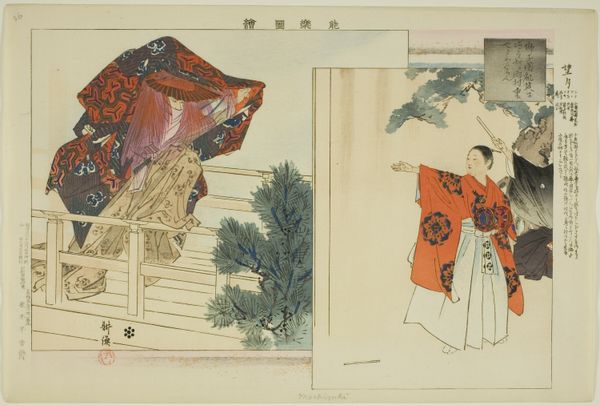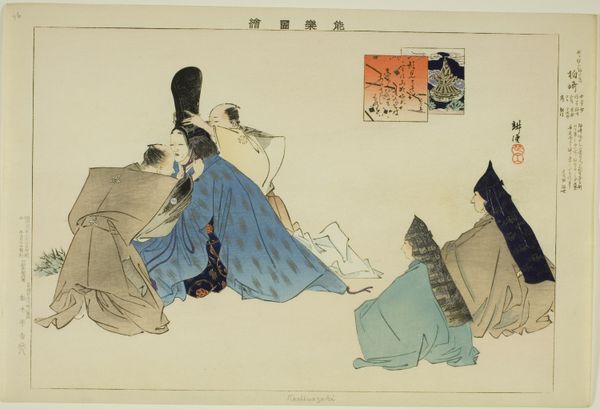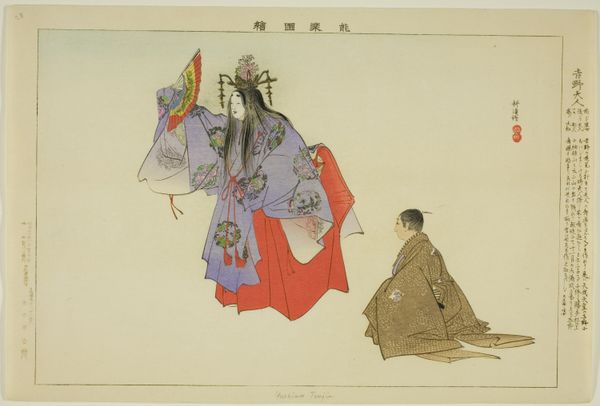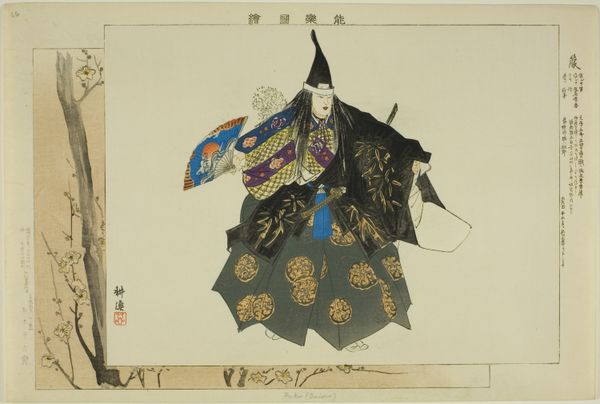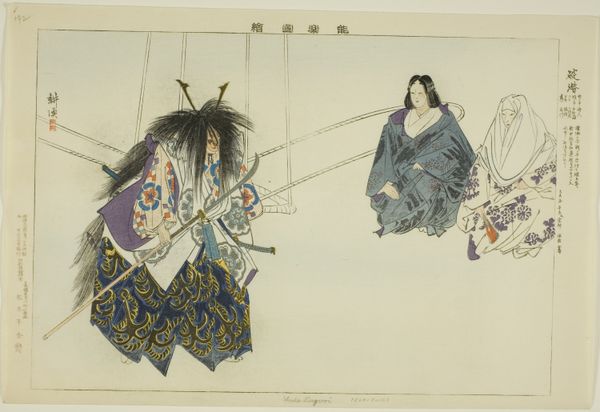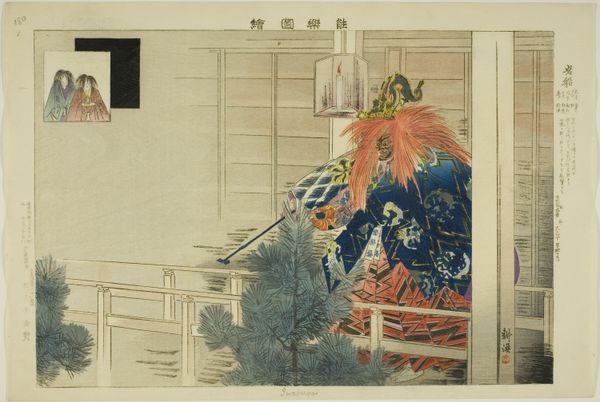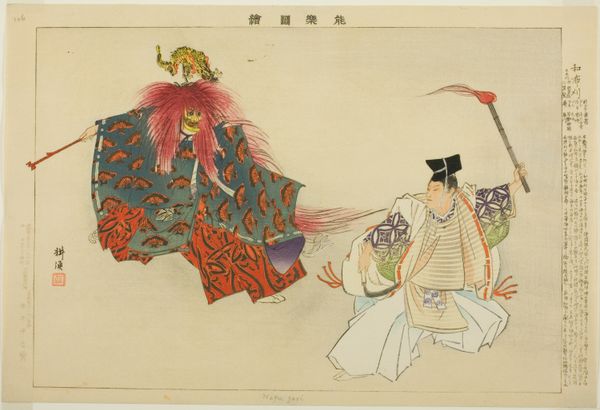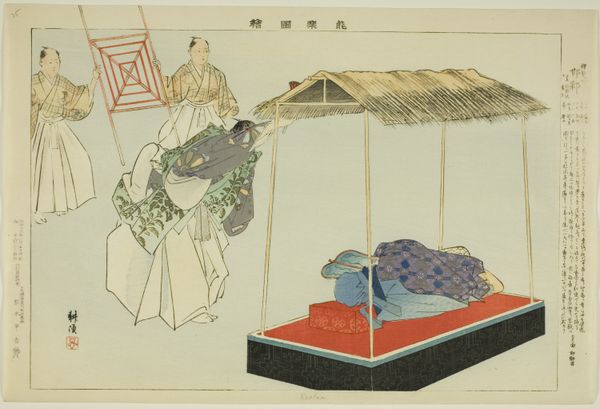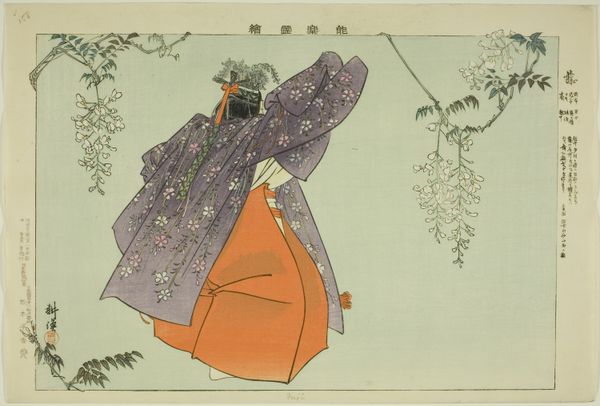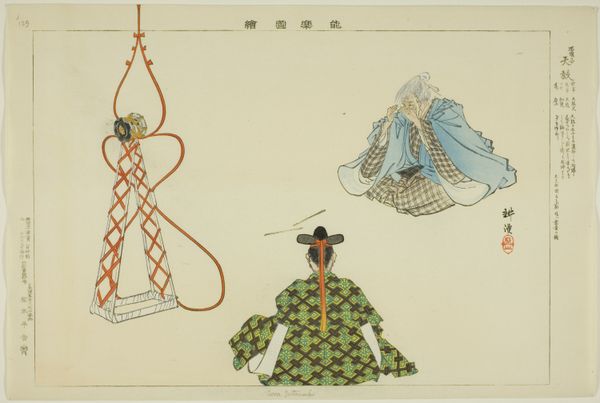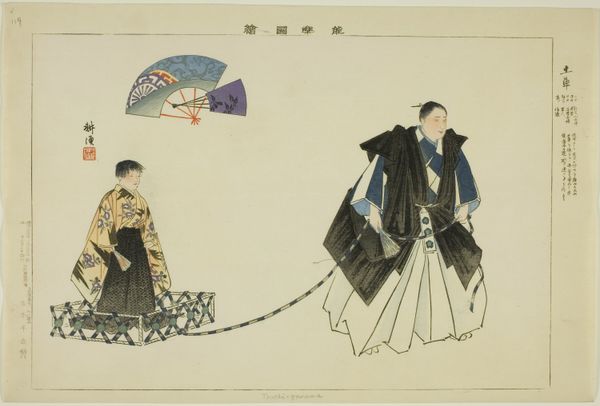
Sumidagawa, from the series "Pictures of No Performances (Nogaku Zue)" 1898
0:00
0:00
Dimensions: Approx. 25.2 × 37.4 cm (10 × 14 4/3 in.)
Copyright: Public Domain
Editor: Here we have Tsukioka Kōgyo's 1898 print, *Sumidagawa, from the series "Pictures of No Performances (Nogaku Zue),"* which now lives at The Art Institute of Chicago. There's a dreamlike, ethereal quality about it that I find intriguing, almost like a half-remembered story. What do you make of it? Curator: Indeed, there's a fascinating emotional undercurrent. Noh theatre is so layered with symbolism, rooted deeply in Japanese history and spirituality. Look at the figure on the right; the long, unbound hair is a potent symbol, almost universally signifying distress, the disruption of social order, and often the presence of a spirit or ghost unable to move on. Notice how that figure contrasts so starkly with the figure in full garb to the left. What about that contrast grabs you? Editor: It feels like we’re seeing two worlds collide: the world of the living and the spectral. I am also intrigued by the play of light and shadow. Curator: Precisely. Light and shadow aren’t just visual elements here; they become metaphors for clarity and obscurity, for life and death. The Sumida River itself has significance, often associated with tales of separation and regret. The inclusion of text in the composition hints that this a cultural reflection through narrative as well. All together it tells of loss, a universal theme across cultures. What feelings emerge when considering this history? Editor: Thinking about it, the image is less about individual sadness, more about shared grief passed down through generations. So even if the story feels distant, the emotion is still relevant. Curator: Precisely. Noh, and Kōgyo's print, offers a space for that collective experience. Art allows us to confront uncomfortable emotions within a contained and symbolic realm, offering catharsis, cultural continuity, and, hopefully, understanding. Editor: I hadn't considered that before. It’s like the image unlocks something deeper than just a story; it reveals cultural memory itself.
Comments
No comments
Be the first to comment and join the conversation on the ultimate creative platform.
